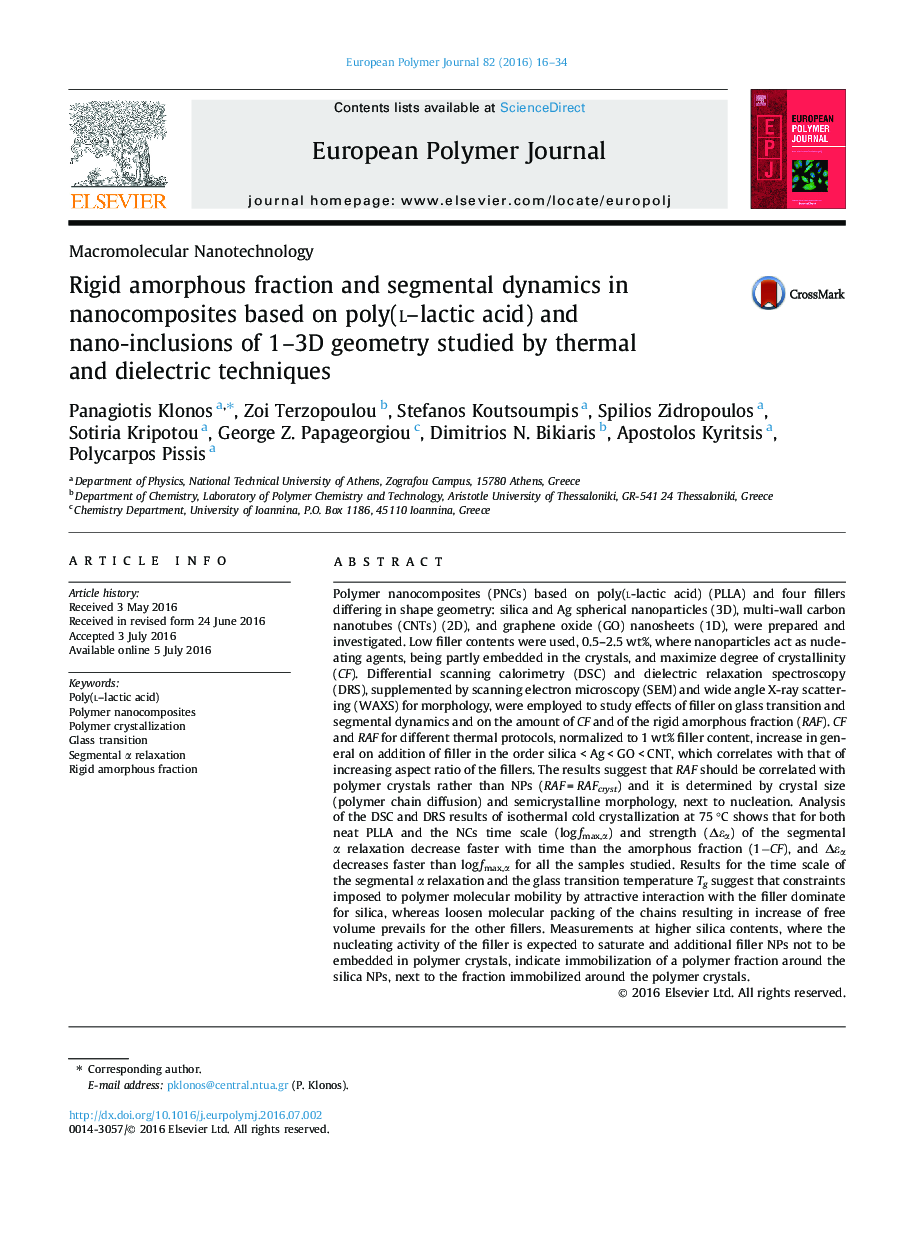| Article ID | Journal | Published Year | Pages | File Type |
|---|---|---|---|---|
| 1399125 | European Polymer Journal | 2016 | 19 Pages |
•Nanofillers act as nucleating agents and maximize degree of crystallinity (CF).•Rigid amorphous fraction (RAF) correlates better with polymer crystals.•Similar trends of RAF with filler and semicrystalline composition by DSC and DRS.•CF and RAF increase on addition of filler in the order silica < Ag < GO < CNT.•Effects on Tg and segmental dynamics explained in terms of semicrystalline morphology.
Polymer nanocomposites (PNCs) based on poly(l-lactic acid) (PLLA) and four fillers differing in shape geometry: silica and Ag spherical nanoparticles (3D), multi-wall carbon nanotubes (CNTs) (2D), and graphene oxide (GO) nanosheets (1D), were prepared and investigated. Low filler contents were used, 0.5–2.5 wt%, where nanoparticles act as nucleating agents, being partly embedded in the crystals, and maximize degree of crystallinity (CF). Differential scanning calorimetry (DSC) and dielectric relaxation spectroscopy (DRS), supplemented by scanning electron microscopy (SEM) and wide angle X-ray scattering (WAXS) for morphology, were employed to study effects of filler on glass transition and segmental dynamics and on the amount of CF and of the rigid amorphous fraction (RAF). CF and RAF for different thermal protocols, normalized to 1 wt% filler content, increase in general on addition of filler in the order silica < Ag < GO < CNT, which correlates with that of increasing aspect ratio of the fillers. The results suggest that RAF should be correlated with polymer crystals rather than NPs (RAF = RAFcryst) and it is determined by crystal size (polymer chain diffusion) and semicrystalline morphology, next to nucleation. Analysis of the DSC and DRS results of isothermal cold crystallization at 75 °C shows that for both neat PLLA and the NCs time scale (log fmax,α) and strength (Δεα) of the segmental α relaxation decrease faster with time than the amorphous fraction (1−CF), and Δεα decreases faster than log fmax,α for all the samples studied. Results for the time scale of the segmental α relaxation and the glass transition temperature Tg suggest that constraints imposed to polymer molecular mobility by attractive interaction with the filler dominate for silica, whereas loosen molecular packing of the chains resulting in increase of free volume prevails for the other fillers. Measurements at higher silica contents, where the nucleating activity of the filler is expected to saturate and additional filler NPs not to be embedded in polymer crystals, indicate immobilization of a polymer fraction around the silica NPs, next to the fraction immobilized around the polymer crystals.
Graphical abstractFigure optionsDownload full-size imageDownload as PowerPoint slide
